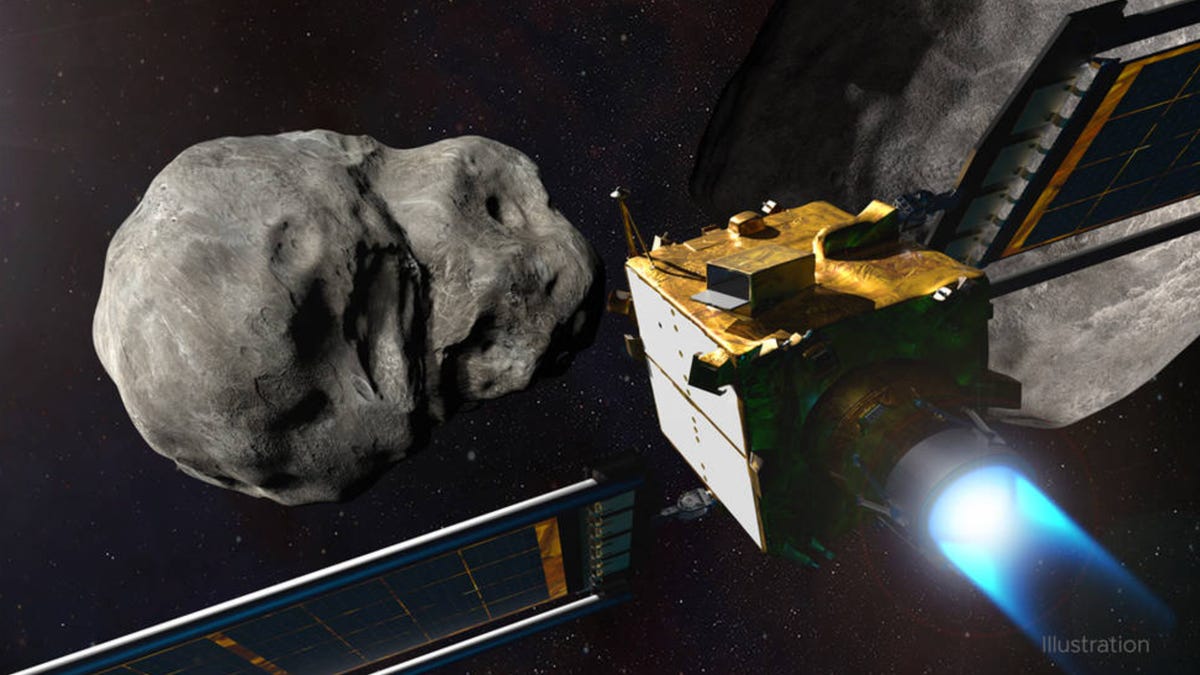You can sleep better at night: NASA declares the DART asteroid mission a success
Two weeks ago, NASA smashed a refrigerator-sized spacecraft into the Dimorphos asteroid. The purpose of the DART (Double Asteroid Redirection Test) mission was to test the technology that could potentially save us from getting splatted by an asteroid and suffering the same fate as the dinosaurs. If you have been waiting on the edge of your seat to find out whether the mission worked, you’ll be happy to hear that on Tuesday NASA officially declared the mission a success. *phew*
The mission’s goal was first to successfully hit the asteroid, which we know was a smashing success due to the live feed of the collision. The second test of success was determining whether the kinetic impact actually caused the asteroid to move. On Tuesday, we found out it did.
In a media briefing, NASA Administrator Bill Nelson triumphantly said, “And so today NASA confirms that DART successfully changed the target asteroid’s trajectory”.
SEE: After being smashed into by a NASA spacecraft, Dimorphos asteroid grows a tail
Before the impact, it would take Dimorphous 11 hours and 55 minutes to orbit the larger asteroid Didymos. Since the impact, it has taken Dimorphos 11 hours and 23 minutes to orbit Didymos, a 32 minute period change.
For context, the minimum requirement for successfully changing the orbital period would have been 73 seconds, according to Lori Glaze, the Director of NASA’s Planetary Science Division. The models the team ran before impact estimated that there could be a change between only a few minutes or several tens of minutes.
The actual results exceeded team expectations.
Actually being able to move the asteroid is of great importance to the mission because if an asteroid were hurtling towards Earth, the goal would be to move it.
“You know, if you went up and you tried to move an asteroid to deflect it from hitting the Earth and it didn’t move, that’s not successful, right?” Carolyn Ernst, DART DRACO instrument scientist at Johns Hopkins APL, said to ZDNET.
SEE: The NASA DART mission smashed a spacecraft into an asteroid. Now what?
The results were calculated by using optical telescopes from around the globe as well as radar images to determine the period change. A new image, “the latest and greatest, hot off the press,” according to Glaze, taken by NASA’s Hubble Space Telescope on Saturday, shows the ejecta blasted from Dimorphos 285 hours after impact.
Although this mission confirmed that NASA has the technology necessary to deflect a potentially hazardous asteroid, there is no certainty that it would absolutely work in the future.
“We should not be too eager to [say] that one test on one asteroid will tell us how every other asteroid will behave in a similar situation,” said Tom Statler, a Program Scientist in the Science Mission Directorate’s Planetary Science Division at NASA Headquarters.
For all the latest Technology News Click Here
For the latest news and updates, follow us on Google News.

